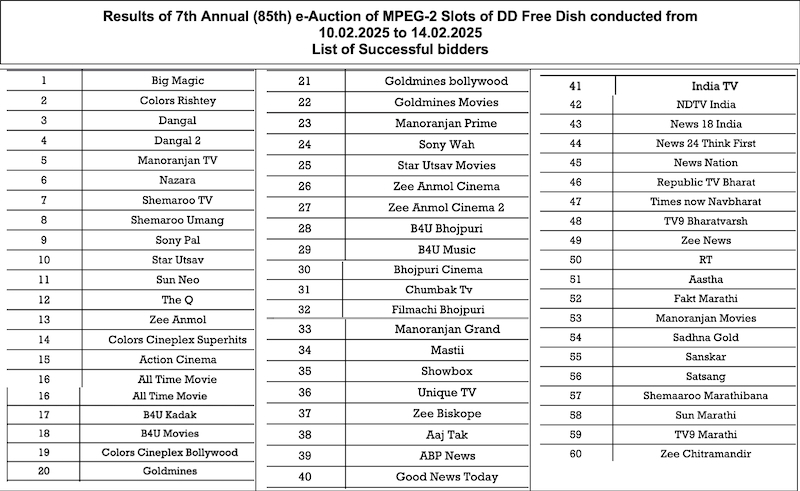MUMBAI: Pubcaster Prasar Bharati has successfully concluded its annual DD Free Dish MPEG-2 slot e-auction, allocating spaces to 60 television channels for the period of 1 April 2025, to 31 March 2026. Major broadcasters securing slots include: Sony, JioStar, Zee, Sun TV. Some of the prominent channels on FreeDish include names such as Colors Rishtey, Sony Pal, and several leading news channels including Aaj Tak, ABP News, and Republic TV Bharat.
The auction process, initiated on 9 January, introduced a structured categoriastion system comprising six distinct buckets, each tailored to specific channel genres and languages. The pricing strategy implemented a two-round system, with initial reserve prices ranging from Rs 3 crore for regional channels to Rs 15 crore for Hindi/Urdu general entertainment channels. The second round saw these figures increase incrementally, with the highest bracket reaching Rs 16 crore.
To ensure quality content delivery, Prasar Bharati has instituted a new 75 per cent alignment rule, mandating that three-quarters of a channel's content must align with its declared genre and language. The broadcaster maintained its standard eligibility criteria, requiring participating channels to possess valid ministry of information and broadcasting permits for Indian distribution.
The auction's participation structure included a Rs 1.50 crore fee for MPEG-2 slots, while MPEG-4 slots commanded Rs 3 lakhs. Notably, the framework extended participation rights to international public broadcasters operating under relevant guidelines.
This auction follows a successful 2024 edition which generated Rs 1,156 crore through the sale of 64 slots, indicating the platform's sustained commercial viability in India's broadcasting landscape. The slight reduction in allocated slots from 64 to 60 suggests a possible strategic recalibration of the platform's capacity utilisation.
The successful conclusion of this auction reinforces DD Free Dish's position as a significant distribution platform in India's television market, particularly for reaching audiences in regions where paid television penetration remains limited.






